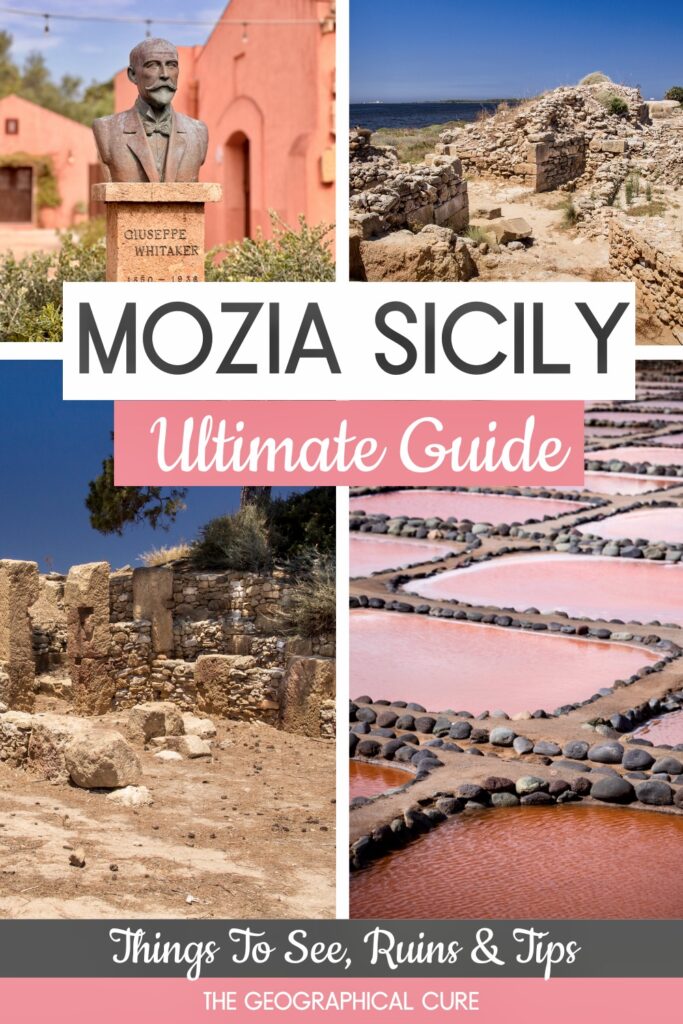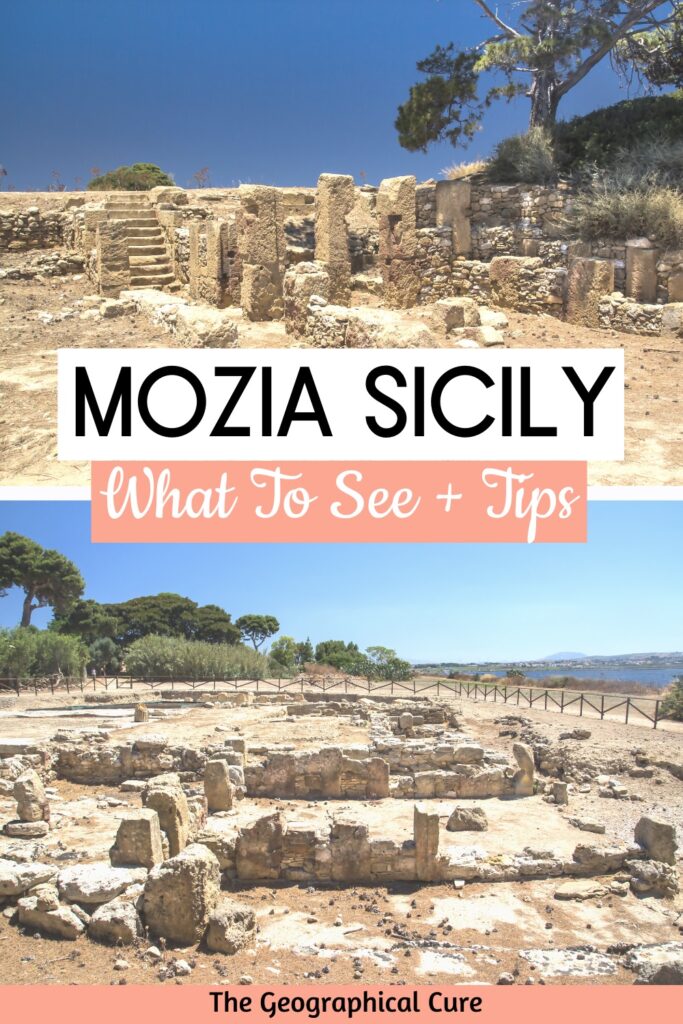Exploring western Sicily? You’ll want to visit the ancient city of Mozia on the Island of San Pantaleo. It’s just off the coast of Trapani. This guide to visiting Mozia covers everything to see on the island and gives you must know tips for visiting.
The flower-filled island once supported an ancient trading post, one of the few Carthaginian settlements on the west coast.
A town with defensive walls and a busy port prospered there for centuries, until the Greeks sacked it in 397 BC. Today, Mozia is home to some ancient Carthaginian ruins and a worthwhile small museum.
Joseph “Pip” Whitaker purchased the island in 1902. He was a wine merchant and amateur archaeologist. He built a villa there and spent decades excavating the island.
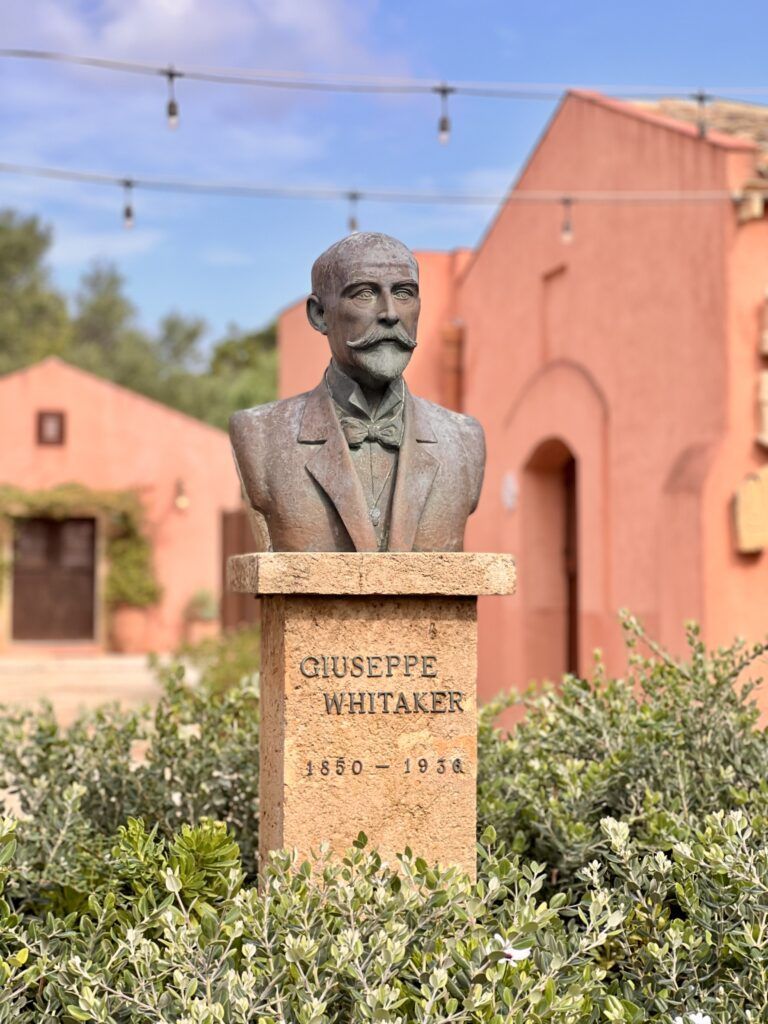
And, in fact, he unearthed the ruins of the Carthaginian colony of Motya. The island is 1110 acres. Yet, only 1/4 of it has been excavated. One wonders what else might be found?
Mozia also pairs well with a trip to the Trapani salt flats and the Museum of Salt.
>>> Click here to book a guided day tour to Erice, Marsala, and Mozia
Who Were The Carthaginians?
The Carthaginians were the ancient enemies of the Sicilian Greeks and Romans. But their history remains a mystery because conquerors erased their records.
They descended from the Phoenicians, who were expert traders known for making rare purple cloth.
The Carthaginians were skilled artisans, crafting ivory, colorful tiles, and glass. They created colonies across the western Mediterranean to trade their wares.
In the 8th century BC, the Carthaginians came to Sicily, founding a colony in Mozia, close to Carthage. Later, they established another port on the island’s north, known as Palermo.
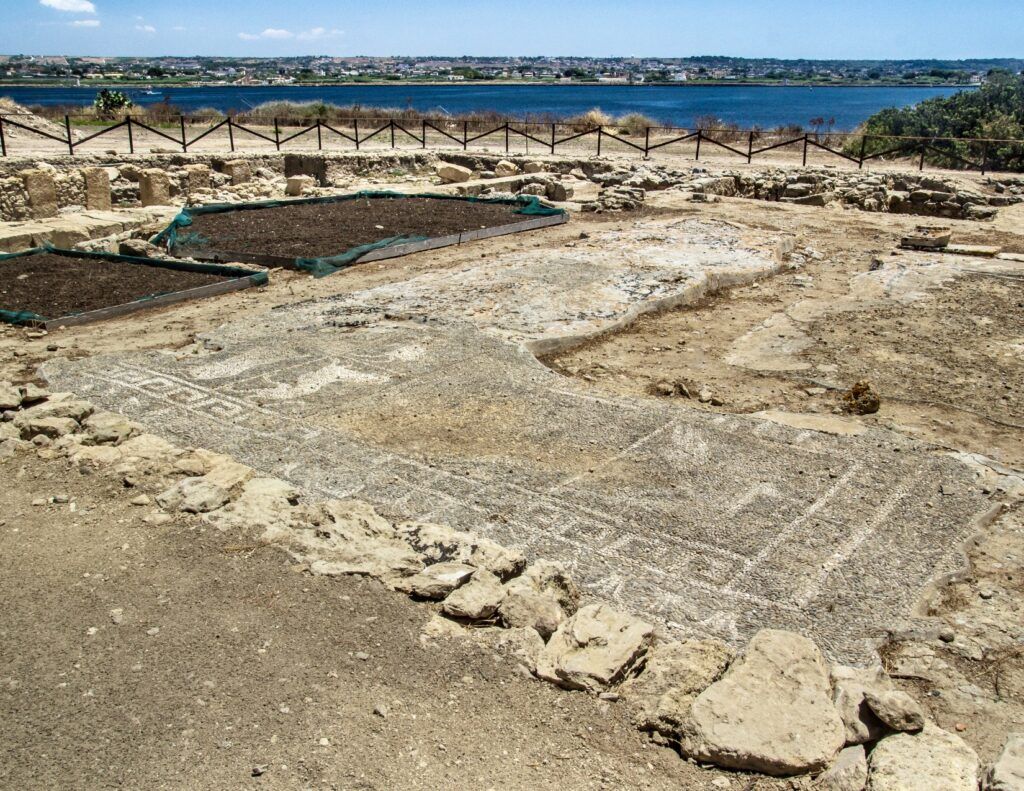
Around the same time, ancient Greeks started settling in western Sicily. The Carthaginians clashed with the Greeks for control of the island and the sea, often raiding from their central base in Mozia.
Although the Carthaginians ruled for a long time, the Greeks retaliated from 403 to 409 BC, sacking cities like Agrigento and Selinunte.
Then, the Romans entered the scene. This led to three Punic wars, with Rome emerging victorious.
The Roman Senator Cato wanted Carthage “deleted,” so Romans destroyed their cities and history. The only accounts of the Carthaginian civilization come from Romans, who portrayed them as fierce pirates.
Considering the scarcity of remnants from this civilization, it’s remarkable that we can still find traces on Mozia. Although mostly in rubble, they are the ruins from the greatest Carthaginian stronghold in the Mediterranean.
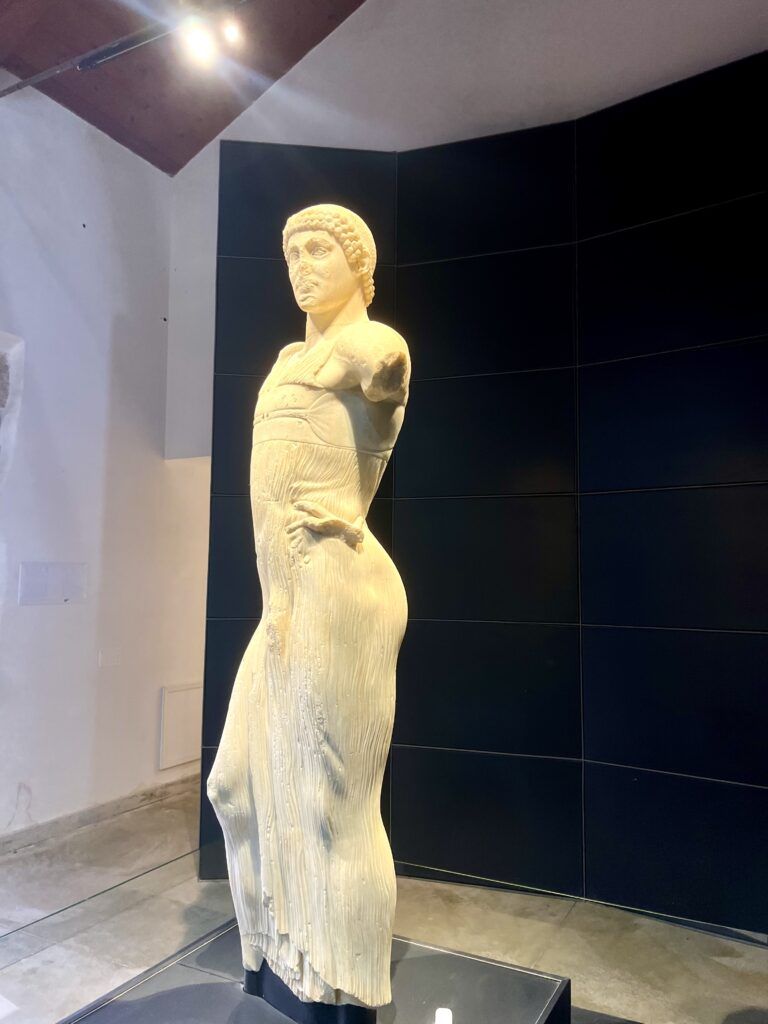
Whitaker Museum
You’ll want to start your visit at Mozia’s small, but excellent, archaeological museum. It’s named in honor of its founder, Joseph Whitaker.
Inside, over two stories, you’ll find an intriguing collection of artifacts unearthed on the island. These treasures have Phoenician, Greek, and Roman origins and include pottery, sculptures, jewelry, funeral stones, and tools.
The museum’s greatest treasure is the exquisite Youth of Mozia. It’s a Carthaginian-style Greek marble masterpiece from the 5th century BC.
This beautiful statue exudes sensuality, clad in a clinging wet tunic. He appears to be striking a pose, with one hand on his jutting hip.
When the statue was found, the head was separated and it had to be reassembled. The statue is rather mysterious. Historians aren’t sure whether it represents an athlete, god, or charioteer.
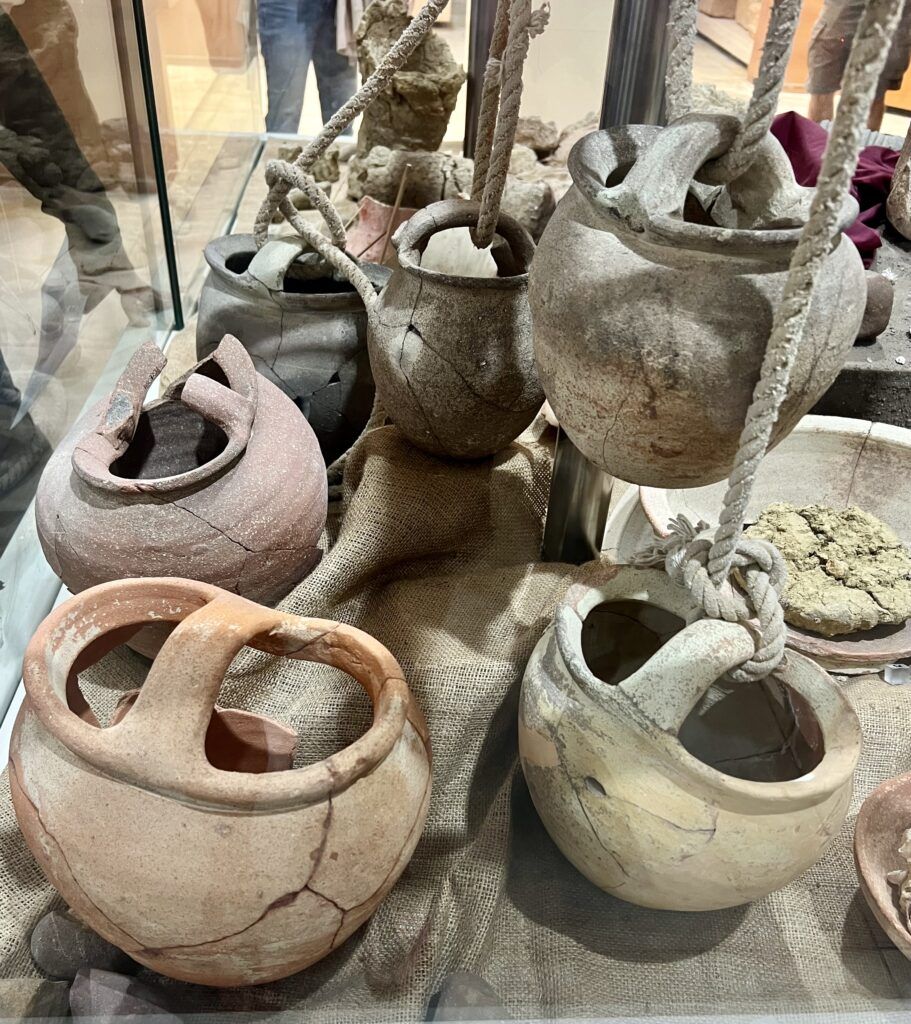
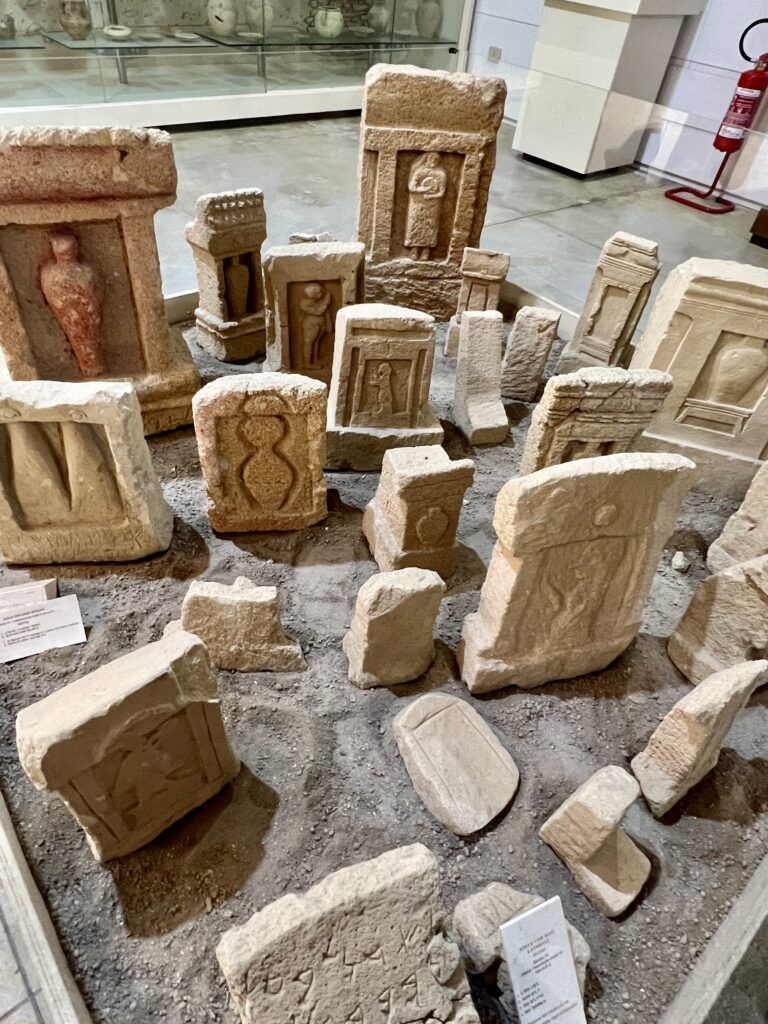
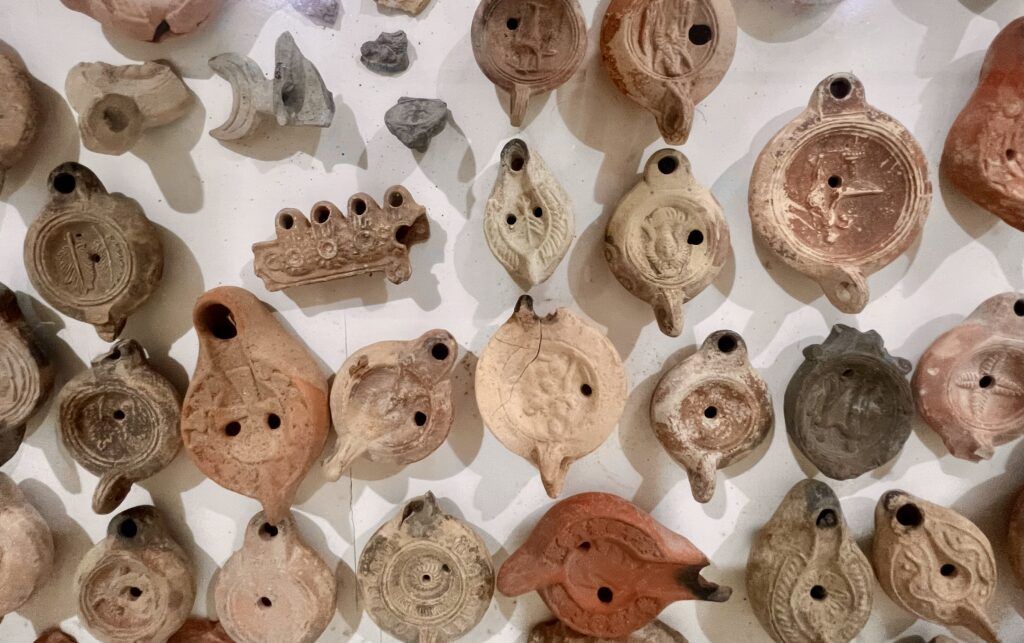
You should also check out the terra cotta mask found in the tophet, a place of sacrifice.
The mask is a study in contrasts, with sorrowful eyes but a grinning demeanor. It’s unclear what that means the Carthaginians thought about the practice of making human sacrifices.
The island museum also as a diorama depicting the Greeks breaching the walls of Mozia in 397 BC. There is also a model of the island and a model of the Temple of Kothon.
The museum is open from 10:00 am to 3:00 pm from April though October and from 9:00 am to 3:00 pm from November thought March. The cost is 9 euros for adults and 6 euros for students.
The museum has flyers with a map of the island and sites to see.
READ: Best Archaeological Museums in Italy
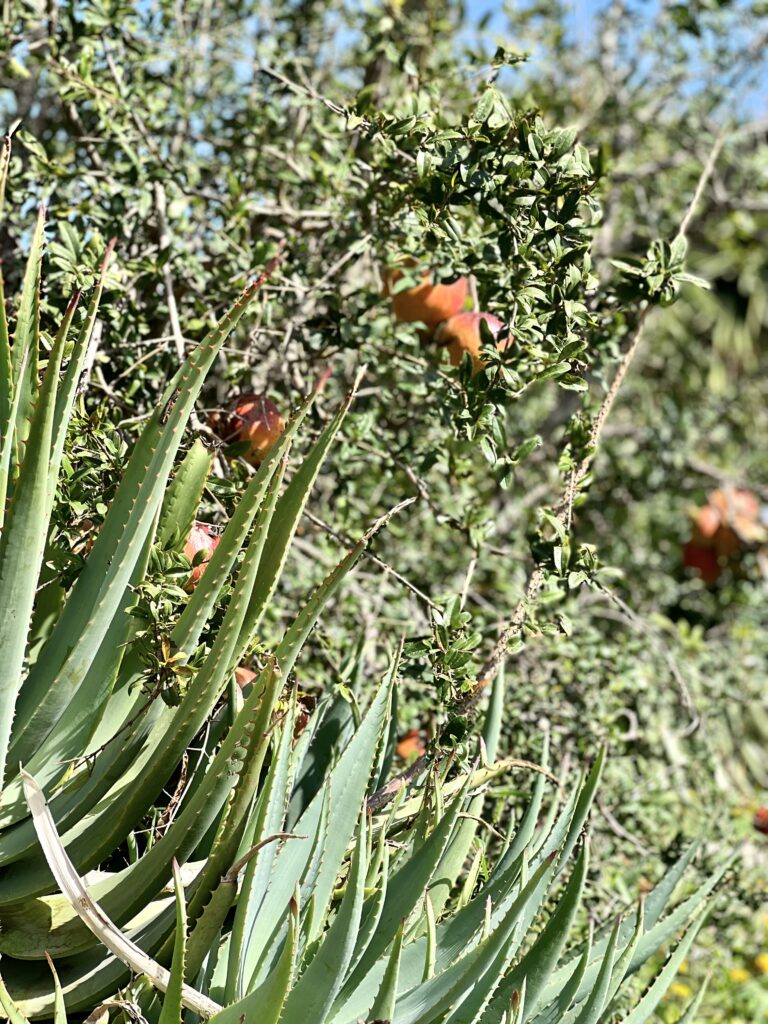
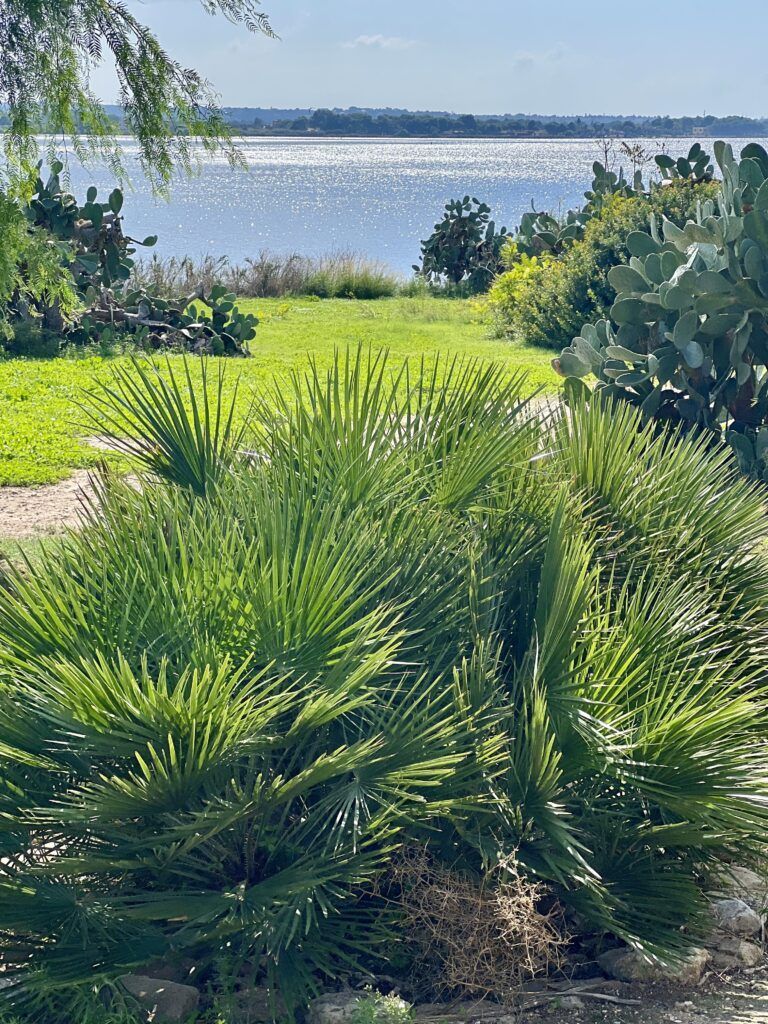
Carthaginian Ruins
As I mentioned, Mozia was originally founded by the Phoenicians, and it later became an important Carthaginian colony. The Carthaginians, who were of Phoenician origin, expanded and developed the settlement.
Consequently, the archaeological remains on the island primarily reflect Carthaginian culture and history, including aspects of their city layout, fortifications, and other artifacts.
Ruins are scattered around the island. And you can wander at will.
There’s a network of trails punctuated with helpful maps and informational displays. You’ll see the remains of streets, buildings, and fortifications.
Here are some things to see:
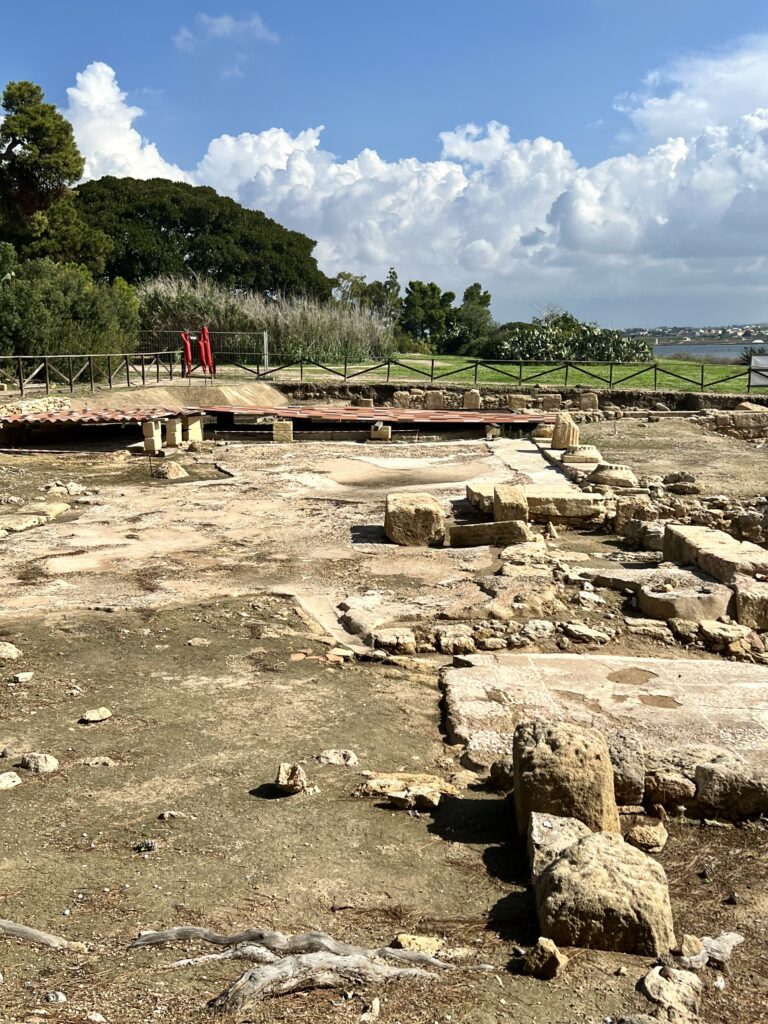
House of Mosaics
The House of Mosaics dates from the Roman period in 3rd century BC. It once had a large rectangular courtyard with a peristyle surrounded by residential rooms.
The house has well-preserved black and white pebbled mosaic floors in the northeast corner. You’ll see images of real and fantastic animals — lions, bulls, and a lion jumping on a bull.
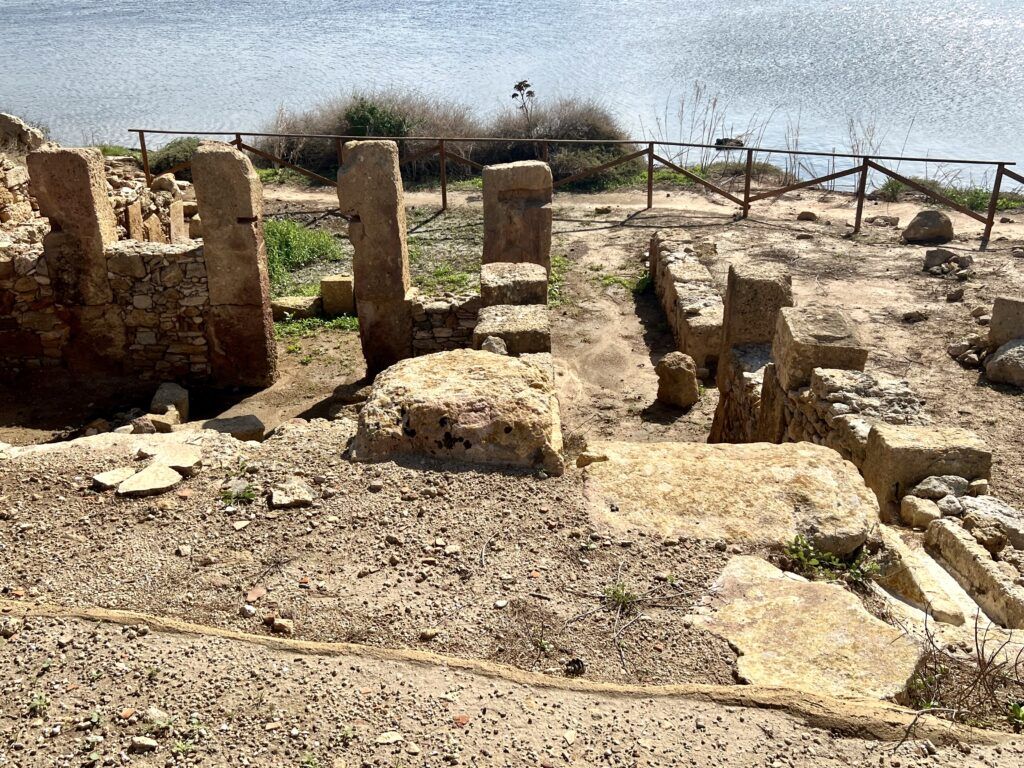
Barracks
The island was once heavily fortified to protect its strategic position. For centuries, it kept people safe. And help was only a short call away.
These ruins pictured above were likely military barracks or a watchtower, originally built near the towers of the city walls.
But the barracks and fortifications were smashed by invading troops from the city of Syracuse.
There are red marks on the stones of the tower. They may be scorch marks from the battle.
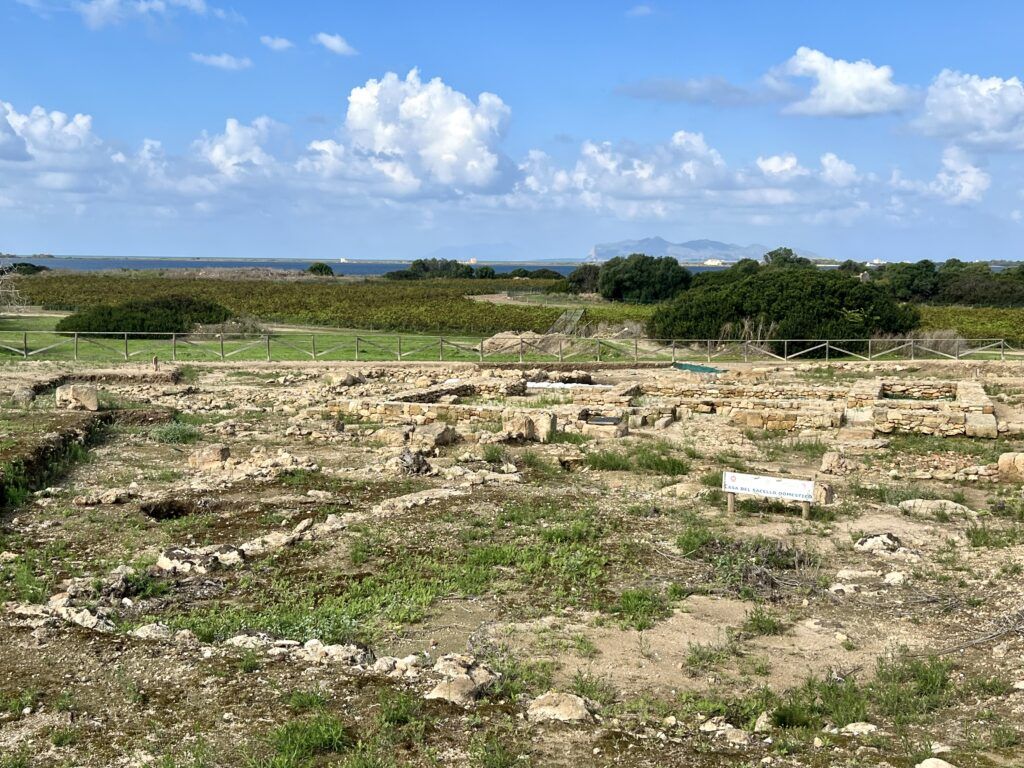
Casa del Sacello
The Casa del Sacello, also known as the “House of the Sacellum,” was once a small shrine or sanctuary used for religious purposes.
The exact nature of these rituals is still the subject of archaeological study and interpretation. Artifacts excavated from the site are in the museum.
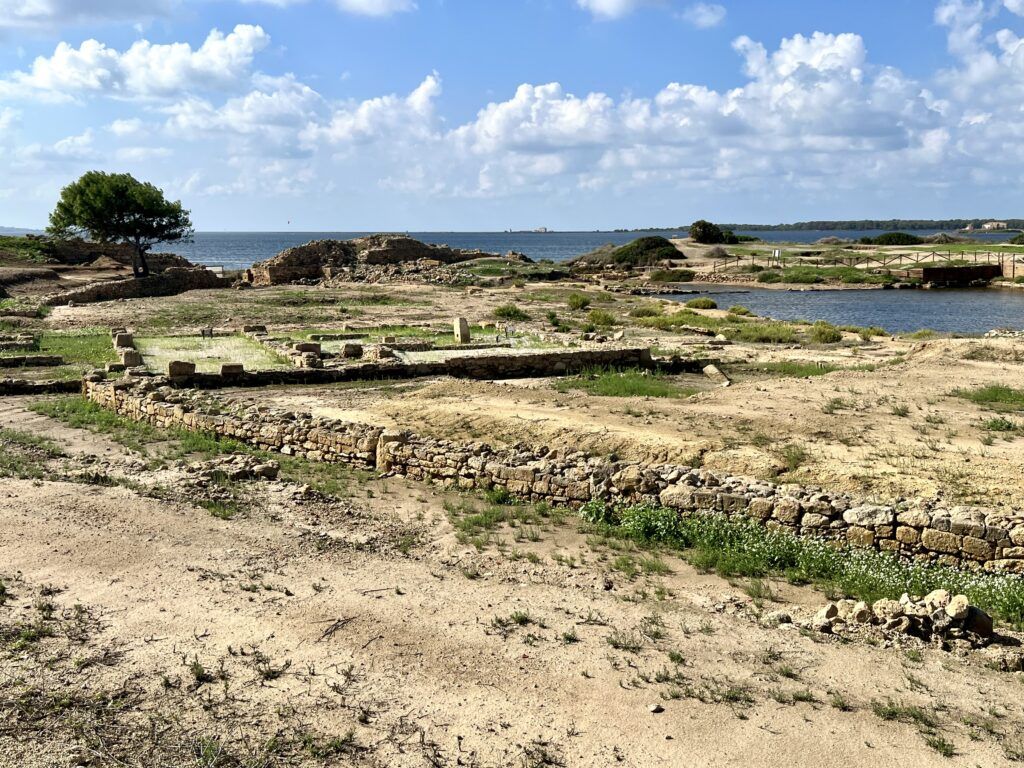
Kothon
The Kothon is a pool that was originally thought to be a dry dock for ships. But when it was excavated, archaeologists discovered that the water was continuously refilled by a spring.
They also found a pedestal with fragments of the feet that corresponded to a statue of a god found nearby.
This led historians to believe that the Kothon was a sacred area. The pool was likely used for sacred bathing and religious rituals.
They believe there were once three temples around the pool. Two were likely dedicated to Zeus and the goddess of agriculture.
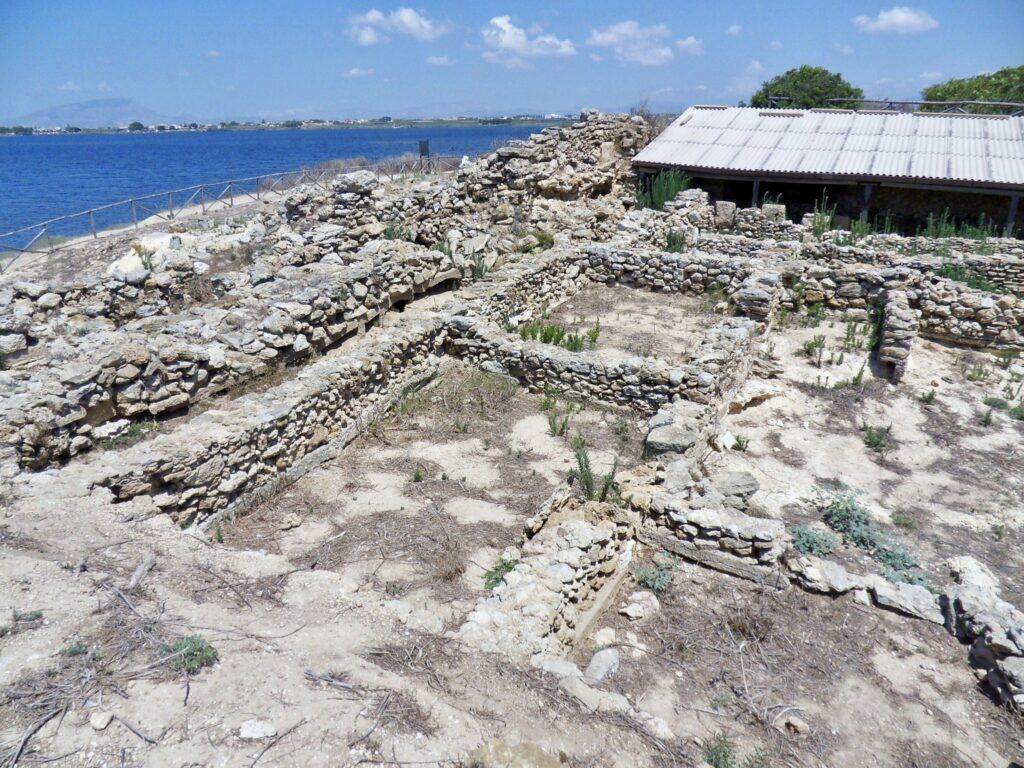
Tophet
The Tophet was the city’s necropolis. It dates back to the Phoenician period, which was around the 8th to 6th centuries BC.
The tophet was a sacred area used for the burial of infants and young animals.
It may also have been the location of ritualistic sacrifices. The Carthaginians made and animal and human sacrifices.
Some historians think the first born male of a family was sacrificed, and that it was a great honor to be chosen. Others believe the sacrificial babes were stillborns.
This was where the funeral steles, with inscriptions mentioning the sacrifices, that you see in the museum were found.
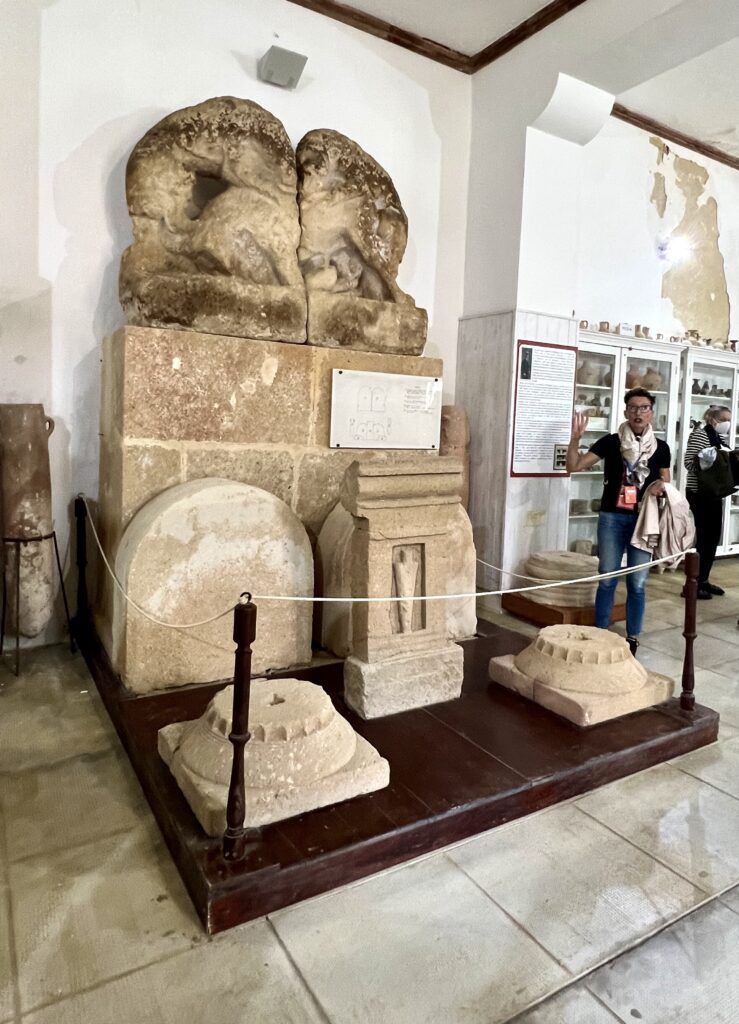
North Gate
Another few minutes along, you arrive at the stubby bases of what was once the North Gate of the island. There are ruins of shops and a main street.
This is where the Youth of Mozia sculpture was found.
In the museum, you’ll also see a large sculpture. It depicts 2 lionesses biting a bull. It’s thought that this was the decoration for the North Gate.
From here, continue strolling with the water at your left. This path will take you back to the boat dock.
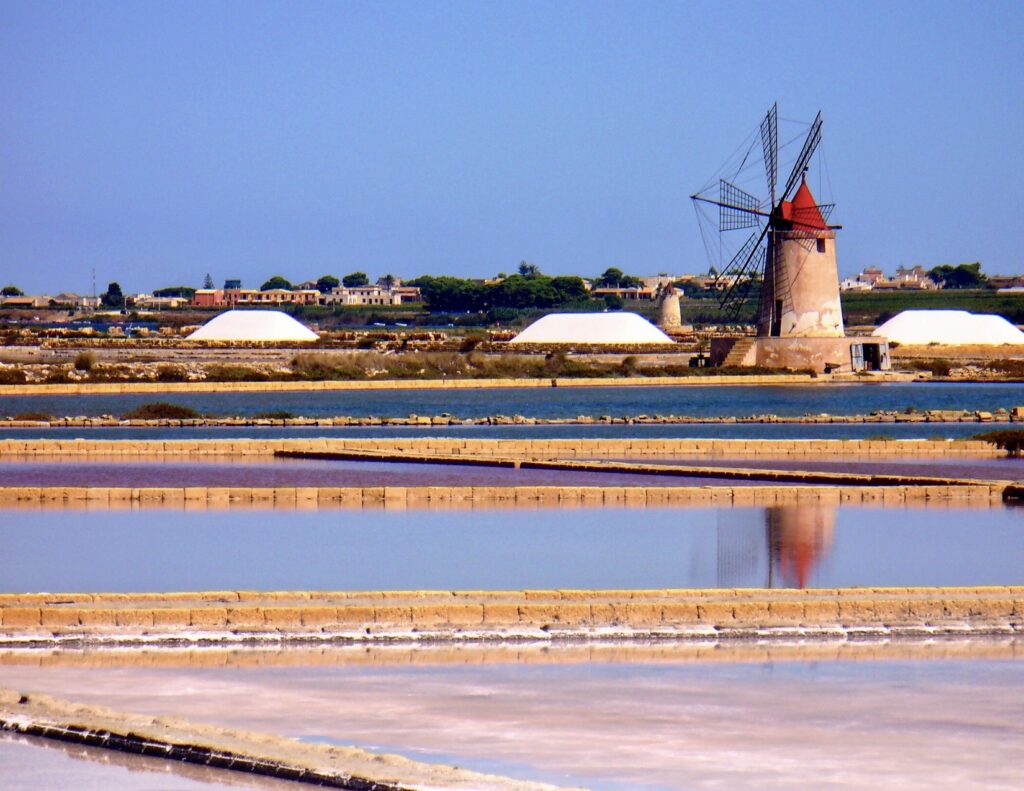
Trapani Salt Flats
You may want to combine a visit to Mozia with the Trapani Salt Pans.
Trapani is a coastal wetland, which boasts a salt-harvesting tradition spanning 3,000 years. Sicilian sea salt, known for its low sodium chloride and rich magnesium, thrives here thanks to the sunny climate, breezy conditions, and clay-lined beds.
Summer, especially June and July, marks the salt’s harvest season. Skilled workers laboriously hand-harvest the salt, forming imposing pyramids protected by red roof tiles.
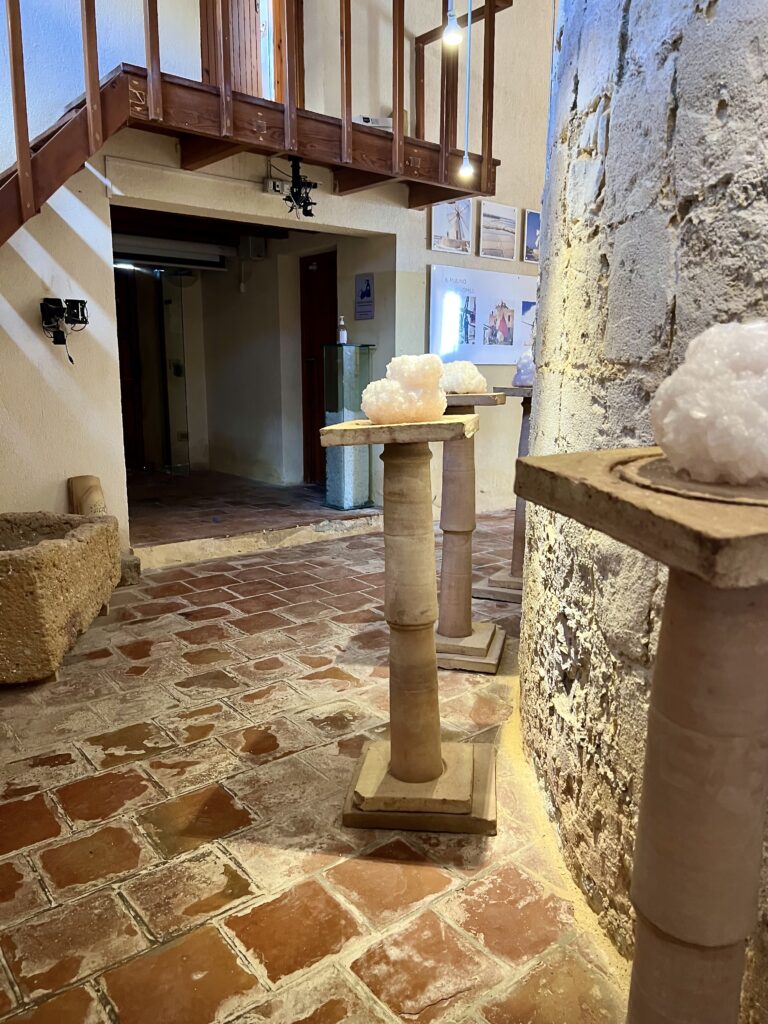
This process allows the salt to dry and remain pristine. You can learn about the salt pans’ history at Salina Culcasi, the Salt Museum. It’s a converted windmill, now a museum, featuring informative exhibits.
You can purchase Trapani sea salt in the museum store, as it’s often pricier outside Sicily.
There is no direct transportation to the salt pans. So, if you don’t have a car, it’s best to visit them on a guided tour from Trapani.
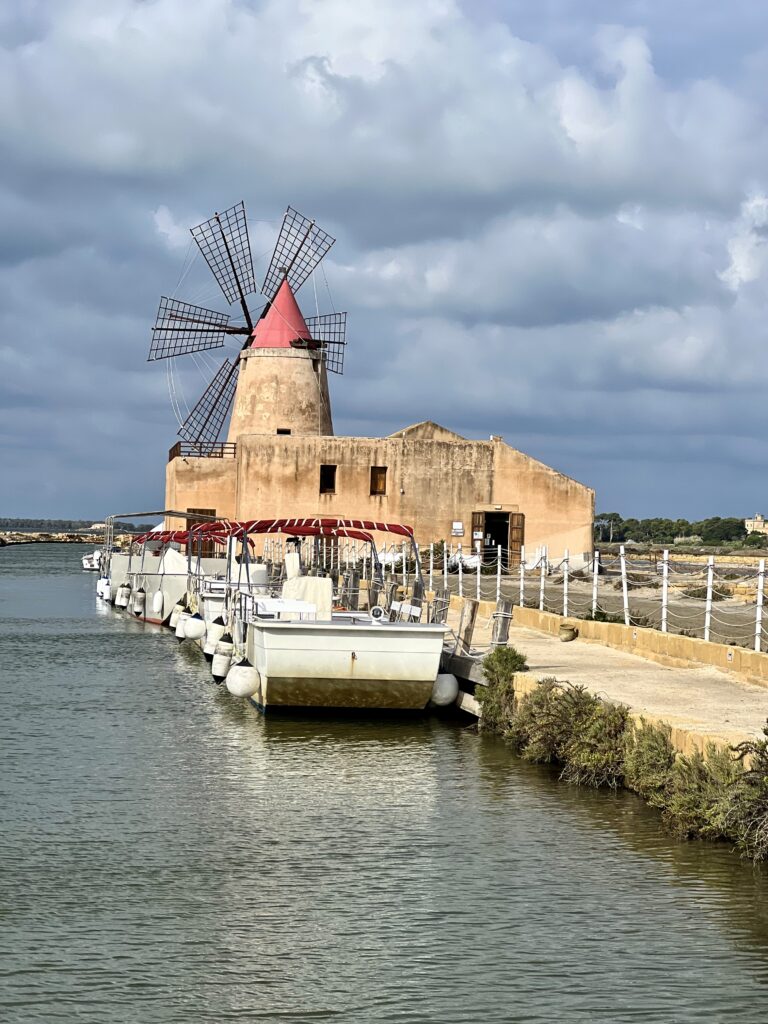
Practical Guide & Tips For Visiting Mozia
Here is some must know information for visiting Mozia.
1. How To Get To Mozia
Two different companies run boats to Mozia.
The Mozia Line is the most convenient. It departs right from the Salt Museum, which is about 6 miles south of Trapani.
Boats leave every 30 minutes. You can buy a ticket right on the dock.
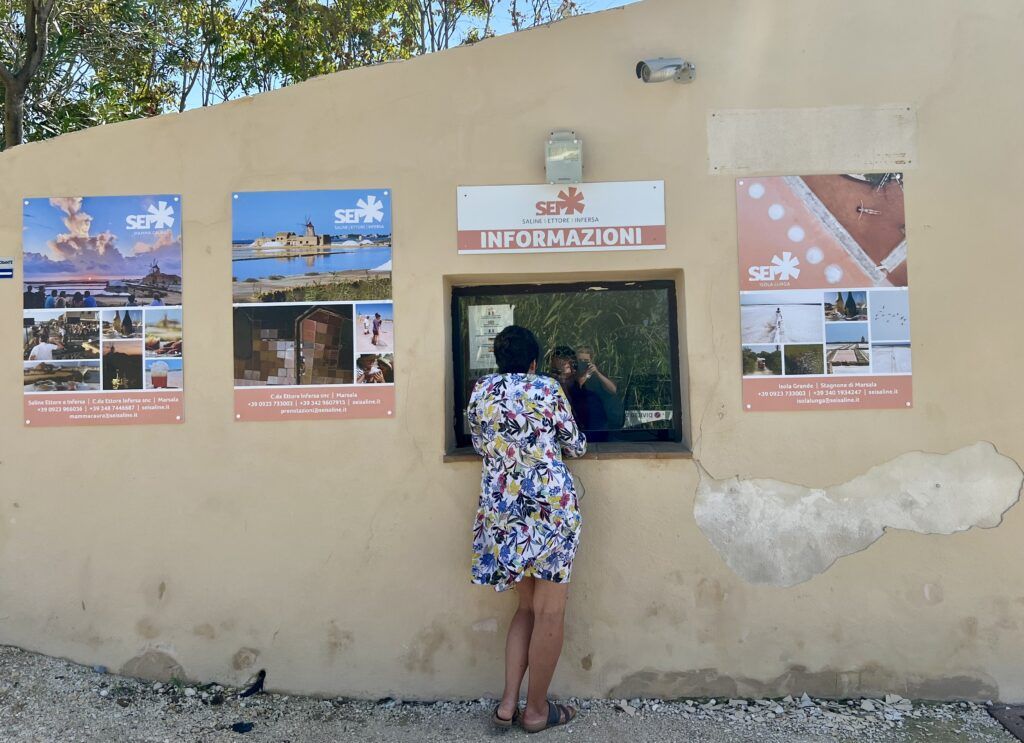
If you are driving, there’s a pay parking on the right near the windmill-museum. You can also take a taxi from Trapani.
The ferry ride takes about 10-15 minutes. It’s usually a smooth ride, although boats may be cancelled in bad weather.
As you exit the boat, walk uphill toward the ticket booth. Just past that, you’ll find informational placards.
2. When To Visit Mozia
Shoulder season, spring and fall, are the best time to visit Mozia. Summer can be hot and busy with tourists. This is also when there are the most mosquitos.
It’s a flat area completely open to the wind and sun. Bring water, a hat, and sunscreen in the summer.
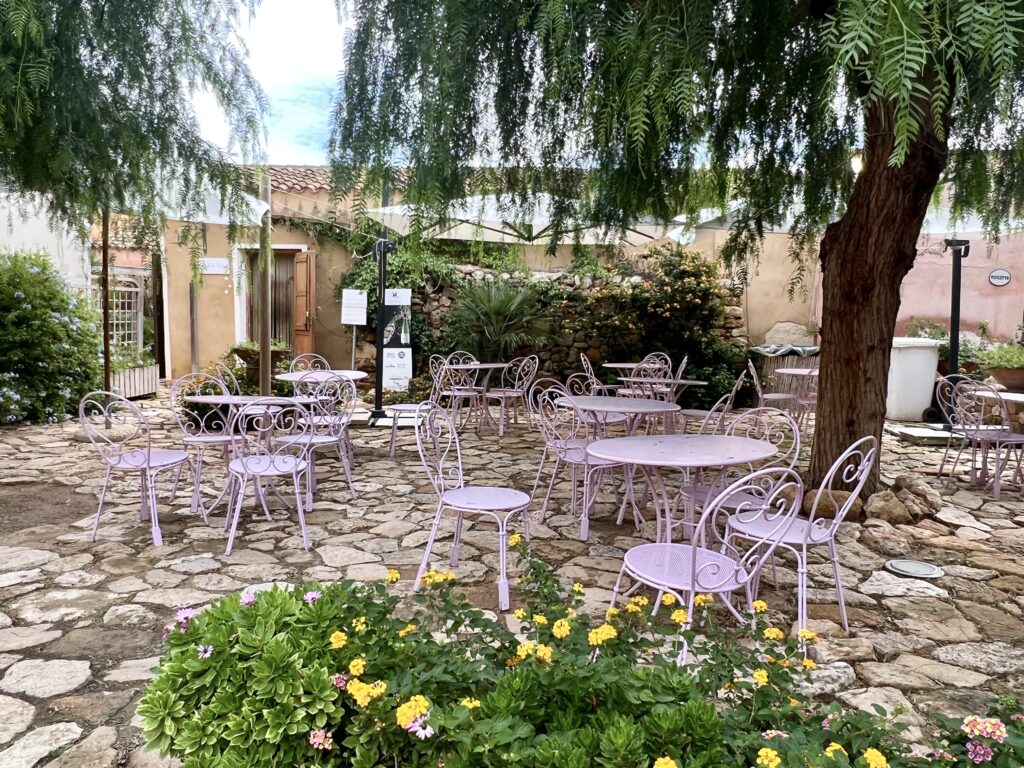
3. Is Mozia Worth Visiting?
Now, as for whether it’s worth visiting Mozia, it depends on your interests. Mozia is an archaeological site with historical significance, and it’s known for its Carthaginian ruins.
If you are interested in history and archaeology, you will likely want to visit if your schedule permits. If you are not, Mozia is skippable.
4. Pro Tips
The island makes the perfect spot for a picnic. But it’s often blanketed in mosquitos. You MUST bring some bug repellent to survive them.
If you want to stay for lunch, there’s a nice little cafe with shady seating.
I hope you’ve enjoyed my guide to visiting Mozia. You may find these other Sicily travel guides and resources useful:
- 1 day in Palermo itinerary
- 2 days in Palermo itinerary
- 5 one week itineraries for Sicily
- 2 weeks in Sicily itinerary
- 2 days in Syracuse itinerary
- 2 days in Trapani itinerary
- 1 day in Catania itinerary
- 1 day in Taormina itinerary
- 1 day in Erice day trip itinerary
- Guide to Agrigento’s Valley of the Temples
- Guide to Villa Romana del Casale
If you need a guide for Mozia, pin it for later.

